Related Research Articles

Jane Seymour is an English actress. After making her screen debut as an uncredited extra in the 1969 musical comedy Oh! What a Lovely War, Seymour transitioned to leading roles in film and television, including a leading role in the television series The Onedin Line (1972–1973) and the role of psychic Bond girl Solitaire in the James Bond film Live and Let Die (1973).

Miss Moneypenny, later assigned the first names of Eve or Jane, is a fictional character in the James Bond novels and films. She is secretary to M, who is Bond's superior officer and head of the British Secret Intelligence Service (MI6).
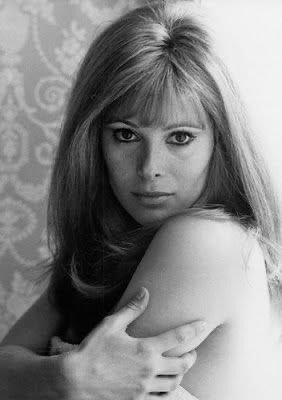
Jill St. John is an American former actress. She may be best known for playing Tiffany Case, the first American Bond girl of the 007 franchise, in Diamonds Are Forever. Additional performances in film include Holiday for Lovers, The Lost World, Tender Is the Night, Come Blow Your Horn, for which she received a Golden Globe nomination, Who's Minding the Store?, Honeymoon Hotel, The Liquidator, The Oscar, Tony Rome, Sitting Target and The Concrete Jungle.

A Bond girl is a character who is a love interest, female companion or (occasionally) an adversary of James Bond in a novel, film or video game. Bond girls occasionally have names that are double entendres or puns, such as Pussy Galore, Plenty O'Toole, Xenia Onatopp, or Holly Goodhead.
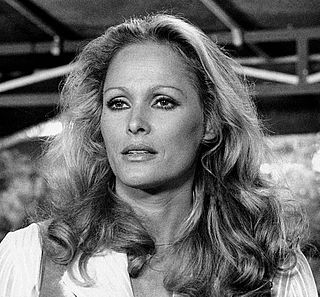
Ursula Andress is a Swiss-German actress, former model and sex symbol who has appeared in American, British and Italian films. Her breakthrough role was as Bond girl Honey Ryder in the first James Bond film, Dr. No (1962). She later starred as Vesper Lynd in the 1967 Bond parody Casino Royale. Other credits include Fun in Acapulco (1963), 4 for Texas (1963), She (1965), The 10th Victim (1965), The Blue Max (1966), The Southern Star (1969), Perfect Friday (1970), Red Sun (1971), The Sensuous Nurse (1975), Slave of the Cannibal God (1978), The Fifth Musketeer (1979), Clash of the Titans (1981) and Peter the Great (1986).

Britt Ekland is a Swedish actress, model and singer. She appeared in numerous films in her heyday throughout the 1960s and 1970s, including roles in The Double Man (1967), The Night They Raided Minsky's (1968), Machine Gun McCain (1969), Stiletto (1969) and the British crime film Get Carter (1971), which established her as a sex symbol. She also starred in several horror films including the British horror film The Wicker Man (1973), and appeared as a Bond girl in The Man with the Golden Gun (1974).
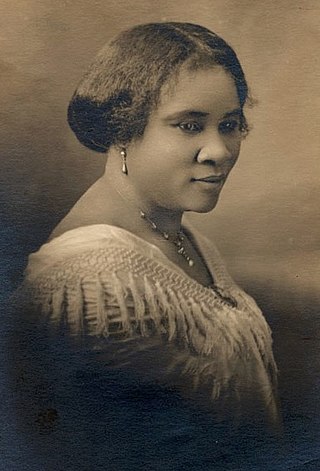
Madam C.J. Walker was an African American entrepreneur, philanthropist, and political and social activist. She is recorded as the first female self-made millionaire in America in the Guinness Book of World Records. Multiple sources mention that although other women might have been the first, their wealth is not as well-documented.

Lois Ruth Maxwell was a Canadian actress who portrayed Miss Moneypenny in the first fourteen Eon-produced James Bond films (1962–1985). She was the first actress to play the part. The films in which she played Miss Moneypenny were Dr. No (1962), From Russia with Love (1963), Goldfinger (1964), Thunderball (1965), You Only Live Twice (1967), On Her Majesty's Secret Service (1969), Diamonds Are Forever (1971), Live and Let Die (1973), The Man with the Golden Gun (1974), The Spy Who Loved Me (1977), Moonraker (1979), For Your Eyes Only (1981), Octopussy (1983), and A View to a Kill (1985). She did not appear in the 1967 adaptation of Casino Royale, nor in the 1983 remake of Thunderball, Never Say Never Again, as the production was not Eon's, though she did, as a similar character, in the spoof O.K. Connery.

Tsitsi Dangarembga is a Zimbabwean novelist, playwright and filmmaker. Her debut novel, Nervous Conditions (1988), which was the first to be published in English by a Black woman from Zimbabwe, was named by the BBC in 2018 as one of the top 100 books that have shaped the world. She has won other literary honors. In 2022 she was convicted in a Zimbabwe court of inciting public violence, by displaying, on a public road, a placard asking for reform.
Madeline Smith is an English actress. After working as a model in the late 1960s, she went on to appear in many television series and stage productions, plus comedy and horror films, in the 1970s and 1980s.

Neria is a Zimbabwean film made in 1991, written by the novelist Tsitsi Dangarembga. It is directed by Godwin Mawuru and the screenplay was written by Louise Riber. It is the highest-grossing film in Zimbabwean history.
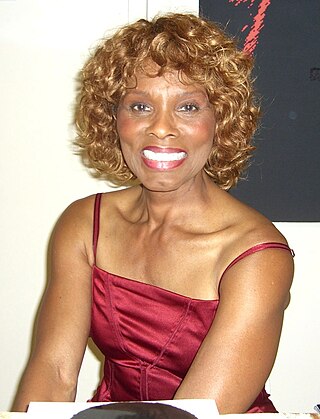
Gloria Hendry is an American actress and former model. Hendry is best known for her roles in films from the 1970s, most notably: portraying Rosie Carver in 1973's James Bond film Live and Let Die; and Helen Bradley in the blaxploitation film Black Caesar, and the sequel, Hell Up in Harlem.

Live and Let Die is a 1973 spy film. It is the eighth film in the James Bond series produced by Eon Productions, and the first to star Roger Moore as the fictional MI6 agent James Bond. It was directed by Guy Hamilton and produced by Albert R. Broccoli and Harry Saltzman, while Tom Mankiewicz wrote the script. Although the producers had approached Sean Connery to return after Diamonds Are Forever (1971), he declined and a search for a new actor led to Moore being signed.

Marianne Stone was an English character actress. She performed in films from the early 1940s to the late 1980s, typically playing working class parts such as barmaids, secretaries and landladies. Stone appeared in nine of the Carry On films, and took part in an episode of the Carry On Laughing television series. She also had supporting roles with comedian Norman Wisdom.
Sue Bond is a British actress, cabaret singer and comedian, best remembered for her appearances on The Benny Hill Show in the early 1970s. She appeared with Benny Hill for three years between 1970 and 1973, making her one of the longest serving female cast members of the pre-Hill's Angels era. In the mid-1970s, Bond appeared increasingly in sitcoms.
John Indi is an actor known for his roles in A Far Off Place (1993), Mandela, and Incident at Victoria Falls (1992). Indi and his actor wife Kubi Indi, started a company making beauty products company based in Africa.
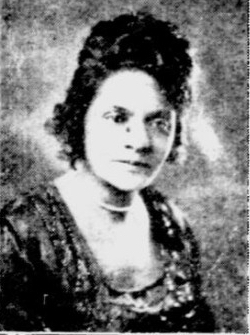
Sara Spencer Washington was the founder of Apex News and Hair Company and was honored at the 1939 New York World's Fair as one of the "Most Distinguished Businesswomen" for her Apex empire of beauty company, schools, and products. Washington gave back to her community, whether founding a nursing home called Apex Rest in Atlantic City, New Jersey or the Apex Golf Club, one of the first African-American owned golf courses in the nation.
Zimbabwe has an active film culture that includes films made in Zimbabwe during its pre- and post-colonial periods. Economic crisis and political crisis have been features of the industry. A publication from the 1980s counted 14 cinemas in Zimbabwe's capital city, Harare. According to a 1998 report only 15 percent of the population had been to a cinema. European and American films have been made on location in Zimbabwe as well as Indian films. American films are popular in Zimbabwe but face restrictions limiting their distribution.
Jesesi Mungoshi is a Zimbabwean actress. She made her debut appearance in 1989, in the film titled, African Journey.
References
- ↑ 3-mob.com, 4 March 2017 - When a Zimbabwean girl appeared on a James Bond film…
- ↑ News Day Zimbabwe, August 3, 2013 - Ocoft rescues children of jailed parents - Report by Ropafadzo Mapimhidze